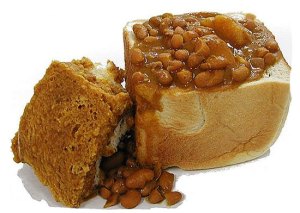 The beginnings and advancements of South African culinary and cooking practices are as unique and varied as the people who make up the populace of South Africa, a mixture of Western and Eastern tastes and foods carefully associated with the history of the sub-continent.
The beginnings and advancements of South African culinary and cooking practices are as unique and varied as the people who make up the populace of South Africa, a mixture of Western and Eastern tastes and foods carefully associated with the history of the sub-continent.
To totally understand the multicultural elements of South Africa’s science of cooking, it is essential to know its historical progression.
Before the inflow of Western travellers and explorers to South Africa over 5 centuries, the “Strandlopers” (indigenous tribes) ate crayfish, fish, mussels, perlemoen, wild fruits and edible seaweed. In addition to wild game, they also consumed mustard leaves, veldkool, surings, and waterblommetjies located in various dams in the Western Cape.
When Westerners arrived in the Cape it was the hunt for food that formed contemporary South Africa food that it is today. The need for spices attracted the Dutch to Java in the 1650’s, and its need for refreshments on the half way mark on their way to Island of Java. They required refreshments when they came past the Cape in their ships. It motivated the Dutch-East-Indian-Company to gather food, water and grow produce on a couple of farms at the tip of Africa. There are areas of Jan van Riebeeck’s(Dutch Explorer and farmer) untamed almond hedge still standing in the world famous Kirstenbosch-Gardens near the city of Cape Town.
The Dutch East Indian company found it was much easier to get hundreds of slaves from India and Java to work the farms rather than try to trap the locals in working for free, which in this case was the Khoi and the San, who was totally unimpressed on how the Dutch worked and how they treating their people. The Malay slaves brought their food recipes, which many say is probably the most well-known South African food preparation style.
Many of the Western Cape households employed Malay chefs that adjusted their standard Eastern dishes using only local and regional ingredients and while doing so created those components of South African food preparation which can really be stated to be one-of-a-kind – the mix of sweet and spicy in various fish and meat recipes, and also the addition of delicious side meals like chutneys and sambals.
At the end of the 17 century, the borders of the colony were being expanded by immigrants like the French-Huguenots, who changed the Western Cape landscape in a remarkable way with all the French vines they brought with them when they left France. They quickly discovered a demand for labourers to work in their wineries, and resorted to the Malay slaves, and a couple Khoi and San they could possibly entice into employment.
Throughout this century and the following, there was a bargain of territorial growth development and inhabitants were building their houses far beyond the borders of civilized world. Lacking the features and services of community life, these inhabitants very early had to refine cooking over charcoal and wood and in outdoor stoves, producing marvellously yummy and nourishing meaty meals including stews and breads made from animals they farmed and vegetables they grew themselves..
When Cape Town came to be British in the 19th-century, British immigrants ended up in the Eastern Cape. They and various other inhabitants’ 19th-century – Portuguese and German among them – introduced their very own traditional meals and food preparation methods.
Almost two centuries after the first Malay slaves were brought to the Cape, a big boatload of indentured (debt bondage labourers) showed up in Durban to work as semi-slaves in the sugar canes of Kwazulu-Natal.
More immigrants came to South African from across India – and when their 10 year contract deals were over they decided to remain in South Africa. Obviously there was a market for their labour and people had families, so the majority of Indians stayed and did not return to their countries.
Indian culinary expanded so prominent over the next few years that event the Zulus of Kwa-Zulu Natal embraced Indian-curries as their very own. We have to mention that Cape Malay curries are not as hot on the tongue as Indian curries.
As you can see there have been many different influences to South African cooking.